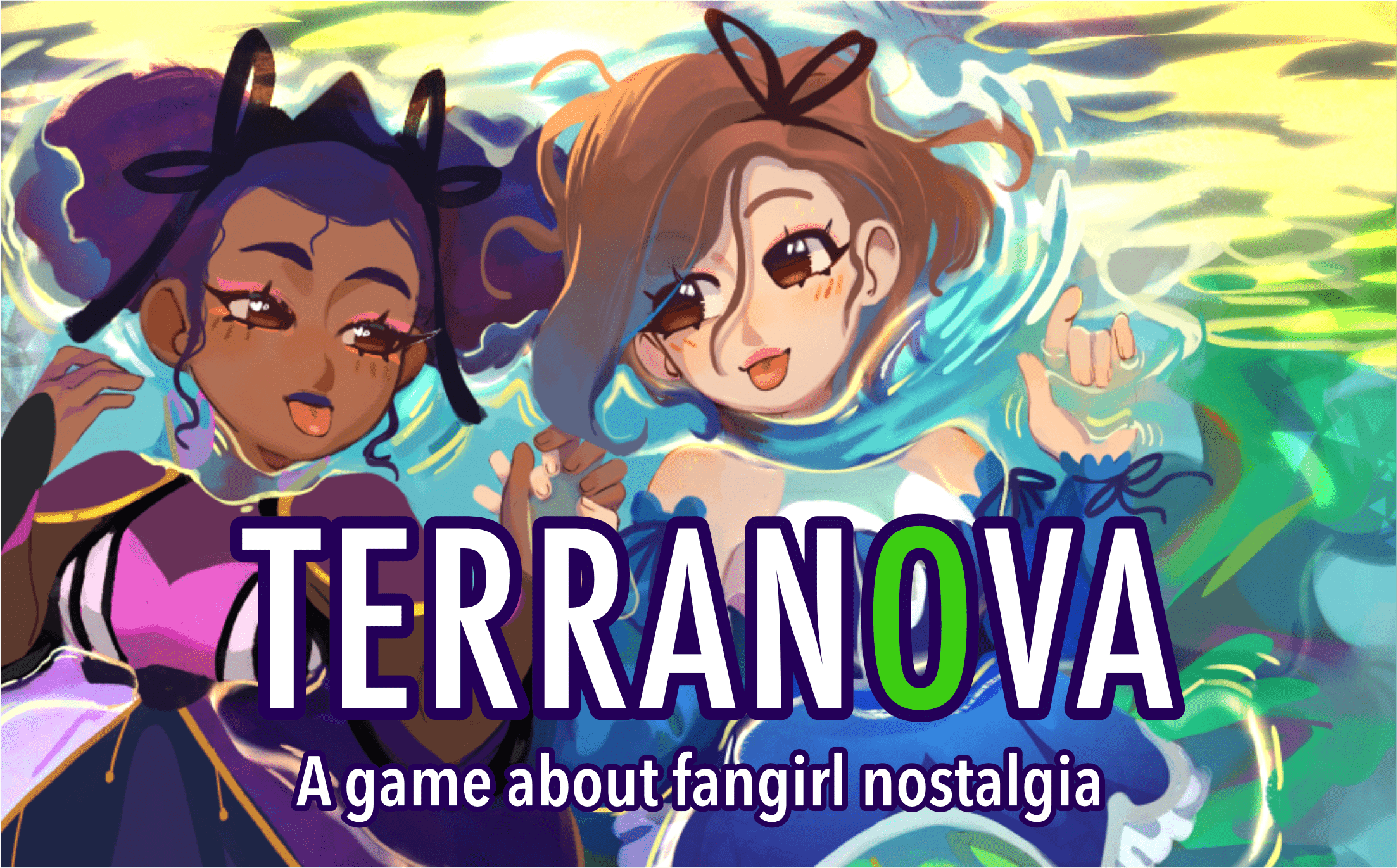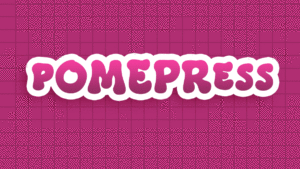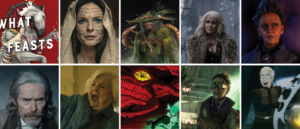Terranova is a love letter to the online fangirls from the 00s — the fujoshis, the roleplayers, the early internet users who paved the way. The entire game takes place through classic AIM chats and “LimeJournal” posts, as four girls meet online and start to roleplay with their OCs. I sat down with CJ and Matt, the two creators of Terranova, to talk about why making this game about fandom, nostalgia, and queerness was so important to them to make and what they hope players will find to love about the teenage girls in Terranova.
Rachel: So first of all, thank you again for taking the time to talk to me today. I was so stoked to play this game! I definitely spent time playing it when I should have been done doing other things — I couldn’t stop reading the LimeJournal entries and all the chat logs, and I was just really invested in these girls and their friendships. So just to start, can you tell me a little bit about yourselves, what you do, and what was important to you about making Terranova?
Matt: I’m Matt, Mabbees on the internet. I’m 32, I have a normal software job by day, and do a lot of game development, music stuff, and art stuff, by night.
CJ: You’re a cultured individual. [laughs] My name is CJ and I’m 34. I’m a software designer and researcher. I started making games in 2005, and Mabbees in what, 2007 or so?
Something that inspired Terranova was that I started seeing some nostalgic games about 90’s internet a few years back. I was very deep into roleplay, especially in the LiveJournal days, from the time I was 13 to maybe in my twenties or so. The bulk of my friendships came from online spaces.
Matt: We saw other people’s nostalgia, and we thought, “That’s not our nostalgia.” That’s not the side of the internet that we grew up with.
CJ: Right. Like looking at things on newgrounds.com or sending people jump scare videos. I grew up as a pretty sensitive kid, so even though I knew about it, it wasn’t where I hung out the most. It was chatrooms and AIM messenger and LiveJournal. And we wanted to take that piece of history and to preserve it for everybody, because we didn’t want to see that sort of narrative fade away. The roleplay community and the fandom community was real and still exists today in different ways, in different forms.
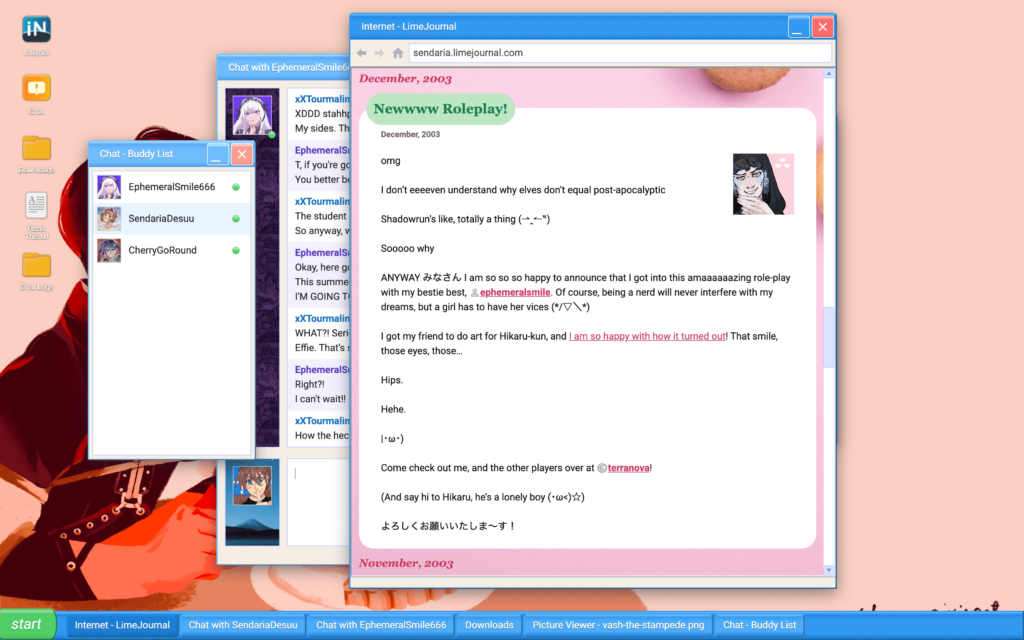
Rachel: I wanted to ask y’all about that nostalgia aspect. I’ve seen that resurgence of different parts of 2000s online culture, and I feel like sometimes it can be really easy to parody or maybe even be too indulgent in it, sort of idolizing it. But I didn’t get either of those feelings when I was playing Terranova. How did you go about incorporating that 2000s aesthetic and vibe without veering too much into overindulging in the nostalgia or cynically parodying it?
Matt: By being very character-driven, we kept everything very grounded in people’s real experiences at the time. We’ve gone through maybe three or four different iterations of what Terranova was going to be. It started life as a Twine game, which is a game engine that is used to make interactive fiction and choose your own text-based adventures. That was the early prototype, and it was just a conversation between you and another character, Cherry.
And from there we wanted to bring in more of the aesthetic of the 2000s. So we made a prototype in 48 hours for Global Game Jam in 2019. That prototype had a lot of what ended up in Terranova now — the chat window and the Windows XP interface, but it was still pretty focused on being only one conversation, one chat. And in late 2019, early 2020, we expanded out the core of that game to include the online blog component called LimeJournal, a play on LiveJournal. But the characters were always front and center. I think that’s where the real heart of the game is.
CJ: As far as the writing was concerned, I wanted to capture what the fan community looked like without it seeming too rosy.
I was listening to a podcast about the BL (boy’s love) community, and one of the things they talked about was this undercurrent of racism in the community, and in fandom at large. It made me look back at my own fandom nostalgia and start to critically analyze it.
Because at the time, in the 1990s and early 2000s, people said things like, “I don’t see color”. It was allowing white people to not do the hard work of deconstructing the systems of racial injustice that existed and see how they contributed to it. It allowed them permission to lean into not having to notice racist actions and policies because they believed we were living in a post-MLK age, and therefore, a post-racism age.
Because of this, it was important for us to show this in Terranova and to not gloss over this kind of permissive thinking and behavior that was rampant in the 00’s. We want others to critically analyze their own nostalgia in this way.
Rachel: Yeah, definitely. There’s a point in the game when Effie starts posting about her experience as a black person in the fandom and getting stopped at cons for cosplaying as what people perceive as white characters, and it really highlights that this is what this group of people experience within an already insular community.
CJ: By no means can I say we did a perfect representation of the way every black person felt during the early 2000s. We did our research by watching black cosplayers’ video blogs, following black artists online, and just listening and taking in what everyone was saying.
Matt: Yeah, that’s something I will definitely say is a big, big help is having people of color to consult. But also, I think the internet has given us a window into the things that black people are talking about with other black people behind closed doors. Because I understand that when we as white people are in the room, it changes the conversation.
Rachel: So often you see white folks like, ”Well, I want to understand what your experiences is like, please dredge up all your trauma so you can educate me.” But you can do the work without putting in the extra burden on those communities — there’s a lot out there that people offer up and it’s really up to creators to find it and consume it and integrate it into their work.
So I did want to ask y’all about the four characters in Terranova. The way that all four of those girls interact in this online forum felt so authentic to me, as somebody who was a preteen and then a teen in the 2000s, the way they sort of inadvertently step on each other’s feelings or they slowly build conflict over time, or even struggling to recognize when abusive dynamics start to sort of infiltrate the friend group. What was it like trying to weave all of that together through chat logs and LimeJournal posts?
CJ: The starting point was humble. For each of the characters, we asked, “Where’s the starting point of this character? What are they good at? What do they need to learn?” and then, “Where do we want them to be by the end of Terranova? What’s the mountain that they have to get over?”
That eventually grew into a gigantic timeline written in post-it notes that tracks each of the character’s development arcs over time.
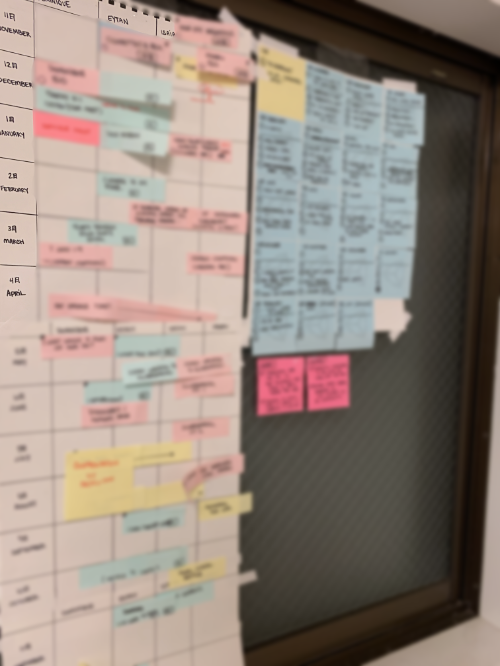
In Effie’s case, it’s this idea that she needs to be the best friend all the time, she needs to be the person that has it all together. She has to come to the realization that she can’t be a good friend to everyone all the time.
And Sendaria’s character arc is very much coming to terms with the fact that she’s running away from a problem that she’s been keeping very close to herself for a really long time. She has to face the consequences of being responsible for herself and being responsible for her own actions. And realizing that at the end of the day, no one’s going to give her a pat on the back for being responsible for herself, which is a really tough lesson to learn.
And Cherry’s was coming to terms with her own queerness.
Matt: Right, and how that fits with her family and spiritual life. She comes from a Puerto Rican Catholic family and is very close to her mother.
CJ: We purposely didn’t want her to denounce God easily and say, “Okay, the church means nothing to me. I’m totally fine with leaving my parents and my community.” Because that choice isn’t that easy for people who were raised in the Church. It wasn’t easy for me. Asking someone to cut off their ties to the Church is like asking them to cut off their own legs.
Matt: We have a lot of friends who left because they weren’t able to reconcile their sexuality and their queerness with what their spiritual leaders were telling them about God. But some people can be religious and queer. There are churches out there that make a real strong point of being accepting and actively doing work to benefit the queer community.
Rachel: One thing I really liked about Terranova is the way that these characters started to understand these parts of themselves that were just sort of emerging. And I feel like in those early internet days, for many there was an opportunity to find ideas and communities that you didn’t know you would resonate with. Because you grow up in this bubble, whatever your bubble is, and then you get online and you find something and you feel like you never would have been able to put into words how much you identify with this until seeing it.
And I think about that with Cherry — having the experience of meeting Tourmaline and being able to RP BL, it might’ve been that it would have taken much longer to be able to identify things about herself without her roleplay experience.
Or even Effie who eventually [spoiler alert!] begins to realize that she’s ace. Was that something that you were trying to do with Terranova, to express that ability to recognize something that you didn’t know you would identify with?
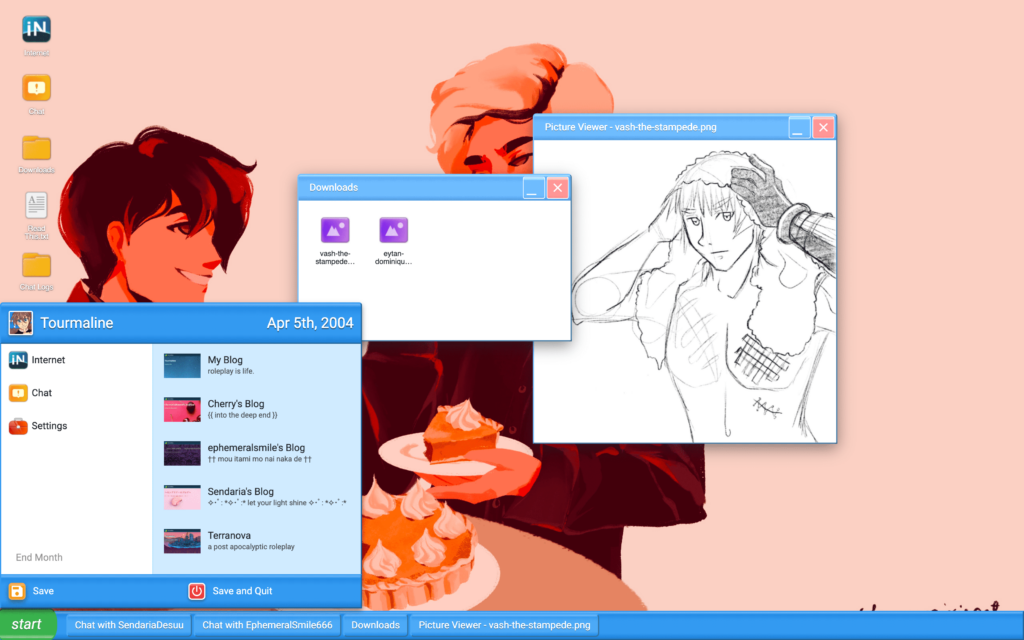
CJ: Most definitely. Most of my online friends were lesbian, bisexual, trans, or some flavor of queer. But we didn’t have the words for that at the time.
It was only through meeting other people who had way different experiences than me that I could recognize it as something in myself. Now I’m proudly bisexual and nonbinary.
The more people that I met online, the broader my empathy circle expanded. I think this is true for a lot of us — you don’t really think about other people who are different from you, because you’re surrounded by other people who reinforce a sense of sameness or what’s “normal.” And through my friends and through LiveJournal communities, I came out, and started dating people. I met my first girlfriend through roleplay.
Back when I identified as female and was less safe than I am now, there was no way I was going to be dating girls in a small Texas suburb. Absolutely no way. But roleplay and online dating was a safe way of exploring that so I didn’t have to be out, and I didn’t have to keep myself in a position of danger.
Matt: Those communities were how I first met people that were queer and who I first came out to. Part of the zeitgeist of the early 2000s, at least what I remember at my middle school and high school, was that people tossed around the word “gay” like a slur. It made it hard to be out in public, to know that what I identified as was seen as a slur.
CJ: I remember swearing off men in middle school and high school. My classmates used to tease me and ask me jokingly if I was a lesbian. I eventually told a teacher and she said, “They didn’t mean anything by it, it’s not a big deal.”
But when one of the other teachers came out as a lesbian publicly and said her partner was also working at the school, she was fired and her partner left. So calling someone a lesbian jokingly isn’t a big deal, but actually being one was.
Rachel: I completely remember being a teenager in the 2000s and having people using “gay” as a slur. I also remember it being really strong in gamer culture at the time, and it’s so interesting and shitty that gamers and fandom modeled each other so strongly in the way that they both bullied and ostracized other folks who should have been part of their communities.
I do want to ask y’all about fandom because I feel like fandom is such a big part of Terranova, and the way that these girls, almost as a pretense, use it to build these friendships over the course of their teenage years. There was this influx of Japanese media that I don’t think was maybe as available before that time, and I remember being a teen or preteen and discovering the Sailor Moon manga at my local Barnes and Noble and being absolutely obsessed. What do you think appealed to people of our generation at that time about Japanese media that you tried to capture with Terranova?
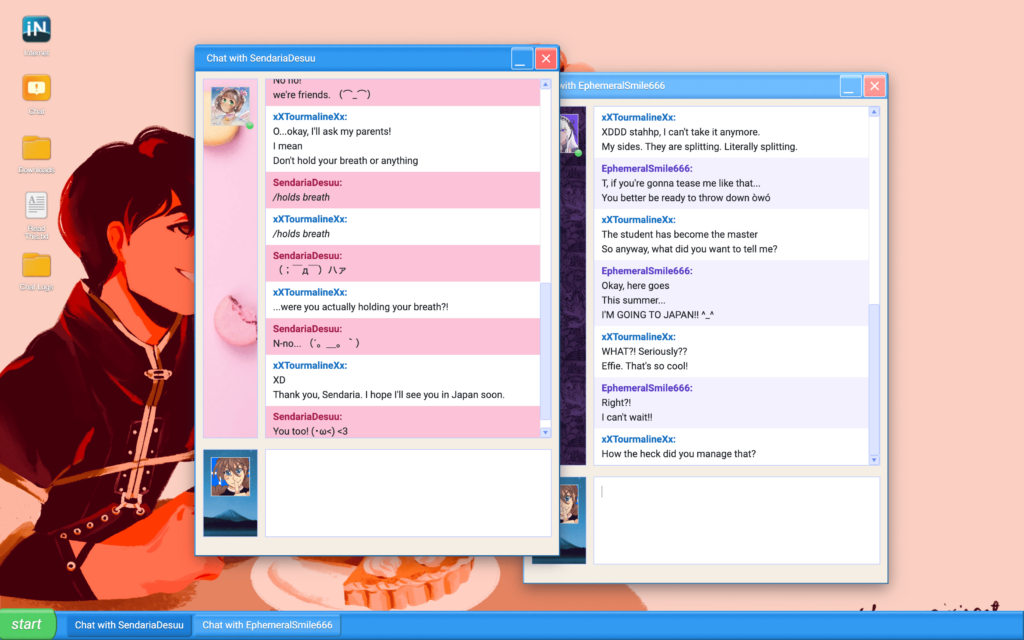
Matt: I don’t want to pretend that Japan is more LGBT friendly, because it’s got its own culture of homophobia. But coming from a Western point of view where being naked together is viewed as wrong or deviant, every anime had their own hot springs episode where characters are naked together. That’s very not the culture that I grew up in.
CJ: Yeah. Japan on the whole still does not fully recognize same-sex partnerships and has some pretty draconian laws in regards to being trans and transitioning in society. Some people find it easier to get married and fulfill their duty to society while being queer on the sly.
But anime in particular portrays this dreamy teenagehood that we as queers wanted — to be in a situation where we could be surrounded by bodies of people that loved and cared about us, bodies of people who were friends that we felt safe with. And yeah, romance is also a part of that. There’s a sexy aspect of it too. But, I think at the end of the day, who doesn’t want a lot of their fellow queer friends to come save the world together? Like, you’re not alone in saving the world, you don’t feel ostracized ‘cause your friends are there with you all the time, and you also get magical powers and a cool transformation sequence or giant mech.
Rachel: So this game will resonate, I feel like, with folks like me who are of that age demographic, have very similar online early 2000s experiences. For folks who either are of that age group but maybe didn’t have that same role play experience, or even people who are a decade younger than us and have a different early online experience, what do you hope that they will connect to in this game?
Matt: You know, we’ve shared this with a couple of our friends who are a generation younger than us, and I’ve been really happy with how it still resonates. The specifics of AIM and LiveJournal aren’t something that they grew up with. But the nostalgia still works.
CJ: The concept of meeting a new person online and then broadening your experiences, or broadening your horizon beyond your family, seems to be a very universal experience.
The thing that we hope people get out of Terranova is the feeling of meeting someone new, and someone who is very different from you. And the feeling of allowing yourself to be fundamentally changed by that person. Even if you have never met them in person, you know them. Their day-to-day secrets matter to you; and yours to them.
You love them. And they love you.
Rachel: Oh, I love that. Oh, that gives me such feelings! To wrap up, I’ve got two questions and you can choose which you want to answer. First, either tell me what you’re working on next, or, second, recommend something that you think people should check out that will have the same vibe as Terranova.
Matt: We have more Terranova developments in the works.
CJ: Yeah. Terranova for Linux, making it so that you can get and change your wallpaper and change the chrome of the windows. The biggest update is adding a music player.
Matt: Yeah, like a Winamp type thing.
Rachel: You know, I was telling my fellow POMEs, I am so excited to play this game, there’s this whole Windows XP interface in Terranova. And immediately they wanted to know if there was a Winamp player in it. [laughs]
CJ: That’s what we’re working on next!
And then after that I don’t know. We’ve been throwing around a couple of ideas of doing a 3D game where we do it from the perspective of the characters in Terranova.
Rachel: So, you could be Dominique? [screams]
CJ: Yeah! But in the meantime, we made a Dreamwidth, which is basically a clone of LiveJournal, and started a roleplay in the world of Terranova for people’s original characters. It’s only open for folks on our Discord.
And maybe that’s actually the end game. We built an entire game just so we could find people for our OC roleplay community. [laughs]
Terranova is out now on Steam and itch.io! You can also grab Terranova as part of the Queer Games Bundle, along with a lot of really other excellent queer indie games, for the rest of Pride Month!\
All images in this article via Terranova & CJ and Matt from the Terranova team!
